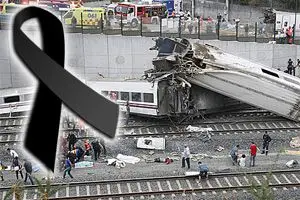Yesterday at 20:42 a tragic railway accident occurred in Santiago de Compostela, passing through the area of Angrois, which has resulted in 65 fatalities out of 140 injured. Naturally, many questions arise regarding how such an event could occur and what responsibilities are attributable to each of the parties involved.
The purpose of this post is to answer some of these questions from a technical point of view, always with the logical reservations and precautions due to the lack of available information at the moment, which will be expanding in the coming hours, as well as the respect for the victims and injured of the accident and their families.
Possible Causes
Initially, the most probable causes for a modern train to experience a derailment of the type and magnitude that occurred are damage to the track, appearance of an obstacle on the track, collision or encounter with another vehicle, and, logically, speeding.
In this case, given that no type of obstacles have been observed and the characteristics of the track, modern and recently constructed, from the first moment the most plausible cause appears to be speeding by the derailed train. But how is this possible with the means of control available today? To explain this, it is necessary to briefly explain the characteristics of the track, the train, and the controls involved.
Track Typology
For historical reasons, Spain has a great variety of track gauges, and we still face the problems associated with this diversity to the present day. The most widely implemented track gauge in Spanish territory is the so-called Iberian or Renfe Gauge, of 1,688 mm. However, the international European gauge is the UIC standard, of 1,435 mm. In Spain, the new AVE tracks are built for this gauge.
The derailed train was traveling on a modern high-speed track designed for AVE journeys of up to 380 km/h. However, not all track sections are enabled for this maximum speed. Specifically, the train was traveling on a section of sharp curves, with high difficulty, where the speed limit is 80 km/h.
The Derailed Train
The derailed train is an Alvia, with eight cars and 2 power cars, and a. The Alvia series is a high-speed train, with a maximum speed of 250 km/h, specially designed to travel on both conventional wide tracks and the modern narrow AVE lines. For this purpose, it has a device that allows the wheelbase to be adjusted, adapting to both types of track.
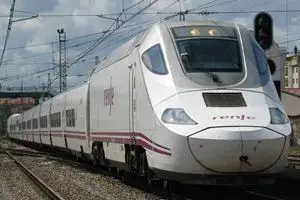
The model involved is the so-called 730, a variation of model 130, both manufactured by Talgo. The 730 model is a hybrid train, which can run on electrified and non-electrified tracks. For this purpose, in addition to the usual electric motor in all trains, it incorporates a diesel engine in at least one of the power cars.
Types of Controls Involved
How is it possible for a modern train, traveling on a modern track, to experience an accident due to speeding? To explain this, it is necessary to briefly mention the different control standards involved.
The ASFA standard (Announcement of Signals and Automatic Braking) is the traditional train control system implemented by RENFE since the 1970s. It consists of a series of beacons distributed along the tracks, which exchange information with the vehicle as it passes over the beacon. At that moment, the train receives information, and in turn transmits its position and speed. The rest of the time, the position and speed of the train are estimated from the data received at the last beacon passage.
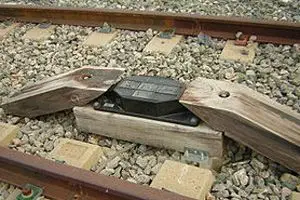
The fundamental objective of the ASFA control is to prevent the train from passing a stop signal due to human error, eliminating collisions and encounters between vehicles. For this purpose, the track is divided into a series of “virtual” sections. The control verifies that each section is occupied only by one vehicle, thus reducing (and almost eliminating) the possibility of train collisions, which were relatively frequent in earlier times.
On the other hand, the ERTMS standard (European Rail Traffic Management System) is the new train control system developed jointly for all of Europe. It is composed of two standards: ETCS, which represents a modernized and expanded version of the ASFA, and GSM-R, which involves continuous radio communication with the control (unlike the traditional method, which exchanges information with the control only at the beacon passage).
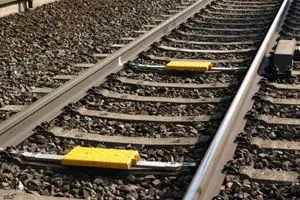
The ETCS system is not only designed to stop the train and prevent collisions between vehicles, but is also intended for high-speed lines where it is difficult or impossible for a driver to visualize traditional signals. Therefore, in the new system, the track provides the train with the maximum permissible speed, and transmits it visually through a screen to the driver. There are several operating modes, from more to less automated. In the most advanced modes, the system is capable of automatically adjusting the train’s speed, although these systems have not yet been put into operation.
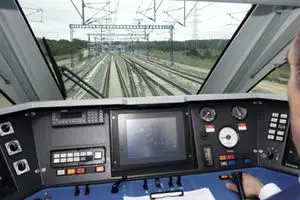
In summary, regardless of the degree to which ETCS is operating, it is practically impossible for a train to exceed the maximum speed of the track with an ETCS system. Even in the case where the train’s speed is still controlled by the driver, the train itself provides visual and acoustic warning signals that completely eliminate the possibility of human error.
So, how is it possible that on a modern track with ERTMS, such as the one in question, the permissible speed is exceeded? Because for the system to work, it has to be installed on both the track and the train. The ERTMS system is installed and operational only on AVE trains, so the derailed train was operating with the traditional ASFA. Therefore, the responsibility for setting the speed depends solely and exclusively on the driver, making it susceptible to human error, such as lack of attention.
Observed Damages
One of the questions that arises on social media is whether the observed damages are compatible with a derailment, or if they show indications of another type of incident, such as a terrorist attack or a collision with another vehicle. In particular, there are questions about the displacement of the cars, the lifting of one of them by more than 6 meters, and the fact that one of them has been broken, severing its structure.
Initially, and without being able to assert anything, my technical opinion is that the observed damages are perfectly compatible and explainable solely as a consequence of the derailment, without the need for an additional cause. The forces and energy developed during an accident of this nature are enormous and are sufficient on their own to cause the damages that occurred.
As for the burned train and the explosion, it is also compatible with the hypothesis of a derailment because, as mentioned, the derailed train is a hybrid train, which incorporates significant reserves of diesel fuel in at least one of the locomotives. Therefore, it is plausible that the accident caused the ignition of the fuel, and therefore the explosion and burning of one or some of the cars.
Conclusion
Taking into account the factors explained above, it is concluded, a priori and with the available information, that the most plausible cause of the accident is human error. The speeding, the exclusive responsibility of the driver, combined with a modern track with the latest control means, traveled by a train that, despite being modern, has an inferior control system, and combined with the characteristics of the train and the layout and difficulty of the curve, provides a convincing explanation of the facts.
It may be that, as is being discussed, the driver was accustomed to the safety of the ERTMS system, and this may have favored the error when driving an ASFA train. It may also be that due to a 5-minute delay, although small, the driver had instructions from the control to increase speed. Or it may be that, as is also being discussed, there were economic reasons related to the reduction of bonuses in case of delay.
In any case, it is clear that an investigation will have to be opened to determine the speed of the vehicle at the time of the derailment, based on control data and the records obtained from the black boxes. The testimony of the witnesses, as well as that of the two drivers who survived the accident, will also be of vital importance.
In my totally personal opinion, if it is proven that the vehicle was traveling on the track at 160 km/h, that is, twice the permissible speed in the accident section, both the drivers and those in charge of controlling the line should be held criminally responsible. If these data are confirmed, regardless of the control system used, both knew perfectly well that the vehicle was traveling at an excessive speed and the risks that this implied, and which, unfortunately, have become reality.
